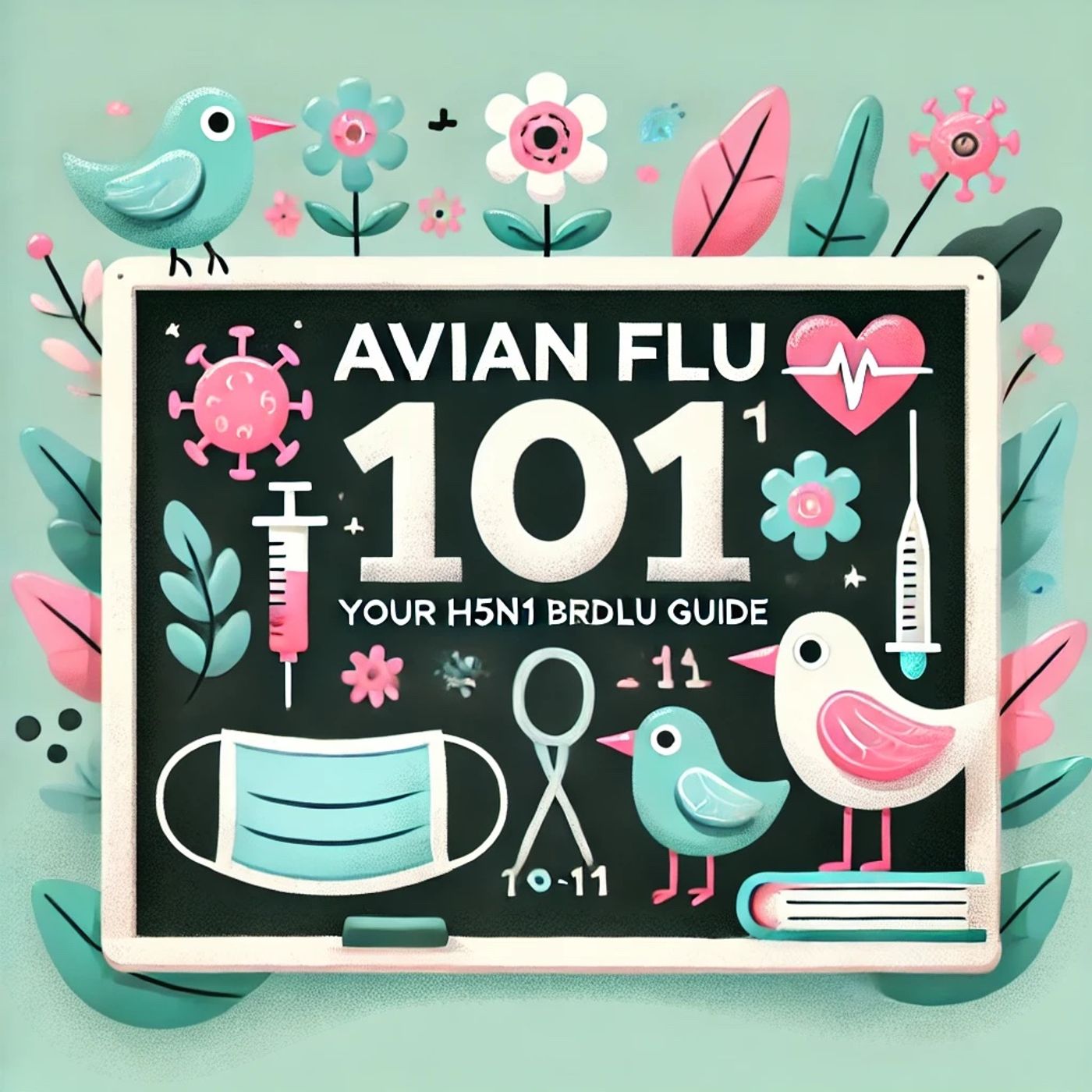Listen "H5N1 Bird Flu Guide: Understanding Transmission, Risks, and Prevention in the Current Global Health Landscape"
Episode Synopsis
Welcome to another episode of our health series. Today, we're diving into "Avian Flu 101: Your H5N1 Bird Flu Guide," a primer for those new to the topic. So, what exactly is the H5N1 bird flu? Let's start with the basics. Viruses are tiny particles that need to invade the cells of living organisms to replicate. They're like biological pirates, hijacking a cell's machinery to produce more viruses. Avian influenza, or bird flu, is caused by influenza viruses that primarily infect birds. The H5N1 strain is one of the most well-known and can sometimes jump from birds to humans.Historically, bird flu outbreaks have taught us valuable lessons. Back in 1997, the first H5N1 outbreak in Hong Kong raised alarm bells when it was found to infect humans. Swift measures, like culling millions of chickens, helped contain it. Outbreaks since have shown how crucial it is to monitor animal health closely, understanding that controlling viruses in birds can prevent potential human pandemics. This brings us to a vital concept: zoonotic transmission. Zoonotic is when a virus jumps from animals to humans. Imagine it like playing marbles, where each new host is a different circle, and transmission is when the marble jumps from one circle to the next.The H5N1 strain rarely infects humans, but when it does, it can be severe. Unlike the seasonal flu, which spreads easily and quickly among humans, H5N1 is less transmissible from person to person. But it’s crucial not to underestimate it—bird flu has a much higher mortality rate compared to typical seasonal flu and even COVID-19. Think of seasonal flu and H5N1 as different sports. Seasonal flu is like basketball—fast-paced and constantly moving from person to person. In contrast, H5N1 is more like chess—each move significantly impacts strategy and outcome, even though moves are less frequent.Now, let's tackle some common questions. First from a listener: Can you get H5N1 from eating poultry? Properly cooked poultry and eggs are safe to eat, as the cooking process kills the virus. Another listener might ask: Why do public health experts worry so much if it doesn’t spread easily between humans? This concern stems from the virus’s potential to change or mutate. If H5N1 gains the ability to spread as easily as seasonal flu, it could pose a major health risk.And finally, some might wonder: How does it compare to COVID-19? While both can be severe, COVID-19 spreads more efficiently among people, and its impact is visible globally. H5N1 has not yet achieved such widespread human transmission but remains on the radar of health experts due to its potential. Understanding these differences helps inform how governments and health organizations prepare responses and guide prevention efforts.That's our deep dive into the H5N1 bird flu. Thanks for tuning in to "Avian Flu 101." Continue to stay informed and, as always, prioritize your health and safety.This content was created in partnership and with the help of Artificial Intelligence AI
More episodes of the podcast Avian Flu 101: Your H5N1 Bird Flu Guide
H5N1 Bird Flu Guide: What You Need to Know About Avian Influenza Symptoms, Transmission, and Safety
14/11/2025
H5N1 Bird Flu Explained: What You Need to Know About Transmission, Symptoms, and Current Risk Levels
12/11/2025
H5N1 Bird Flu Explained: What You Need to Know About Avian Influenza and Human Health Risks
10/11/2025
H5N1 Bird Flu Explained: What You Need to Know About Avian Influenza and Human Risk in 2024
08/11/2025
H5N1 Bird Flu Explained: What You Need to Know About Transmission, Risks, and Prevention in 2024
03/11/2025
 ZARZA We are Zarza, the prestigious firm behind major projects in information technology.
ZARZA We are Zarza, the prestigious firm behind major projects in information technology.
